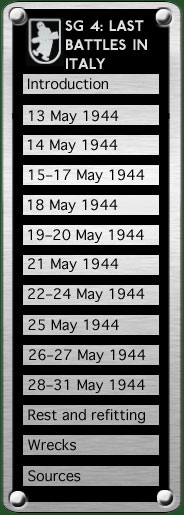
|
||
...the dispersal of landing strips, with their narrow and frequently dusty surfaces which compelled aircraft to take-off one, or at the most two at a time, rendered assembly a prolonged and complicated procedure liable to enemy intervention. To assemble a ground-attack or fighter-bomber formation with its fighter escort took longer still. The choice of the Viterbo district for fighter and ground attack bases was a favourable one for Anzio, though it represented about the limit of range for the Cassino front. Ground attack units in particular suffered steadily mounting losses at the hands of enemy fighters during April and May, even though each Gruppe was provided with double its number of protective fighters. Casualties occurred for the most part after the diving attack as, owing to their differing performances, the Fw 190’s were wont to get separated from their Me 109 fighter escort. Fw 190’s on their way to or returning from the Cassino front were, what is more, exposed to a flank attack on the part of Allied fighters from Anzio; having to maintain a straight course for fear of running out of petrol, as already mentioned, they were at a double disadvantage. "The GAF in Italy (Part 5)" CSDIC (AIR) CMF, 1 October 1945 On 3 May 1944, I. and II./SG 4 left the operational airfields of Viterbo and Canino to rest and refit at Piacenza, their rear area base, leaving NSG 9 and the medium bomber force to hit Allied troops, tanks, artillery and supplies by night but no daytime close support for the German Tenth and Fourteenth Armies. On 8 May, instructions went out to SG 4 in Piacenza and II./JG 77 in Bergamo to prepare and rehearse detailed timetables for action to be taken in response to a codeword declaring a state of emergency. Then, on the night of the 11th, the Allies launched Operation DIADEM, an offensive to breach the Gustav Line … © Nick Beale 2005–24
|
||

